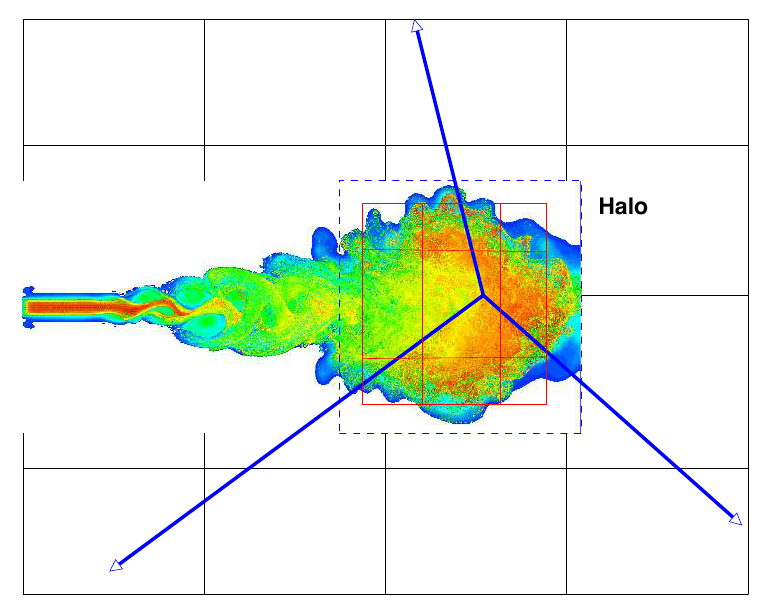Uintah
| Download Uintah | Documentation | Mailing Lists |
Uintah is a set of software components and libraries that facilitate the solution of partial differential equations on structured adaptive mesh refinement grids using hundreds to thousands of processors. Uintah is the product of a ten year partnership with the Department of Energy's ASC program through the University of Utah's Center for the Simulation of Accidental Fires and Explosions.
Uintah has been one of the first computational frameworks to deploy methods such as the Discrete Ordinates method (developed at LANL) for radiative heat transfer in CFD applications. Uintah is now taking advantage of the petascale hardware and the advances in Monte Carlo ray tracing technology pioneered in computer visualization to develop an efficient and scalable solution to radiative heat transfer. Our approach, Reverse Monte Carlo Ray Tracing (RMCRT), lends itself to scalable parallelism because the intensities of each ray are mutually exclusive and amenable to domain decomposition. However, the all-to-all nature of radiation requires information about the entire computation to be available to each computational cell. To address this issue, we are currently developing scalable CPU and GPU multilevel RMCRT algorithms that take advantage of increased resolution of each ray in the near field while using coarse grid information from the far field. This is accomplished by using multilevel structured AMR (Figure 1). Our prototype GPU implementations have shown to be an order of magnitude faster than the CPU counter part, while retaining the required accuracy.
Every other Tuesday, Homebrew meetings are held for developers and users of the Uintah software infrastructure in WEB 4640. The discussions focus on issues surrounding the Uintah software framework and the evolution towards UintahX for the CCMSC problem. If you are interested in participating in Homebrew meetings contact John Schmidt or Dav de St. Germain.
Uintah-X Architecture
Component-based design
The Uintah system allows multiple complex simulation components to co-exist and leverage the a common scheduling and communication framework. Components include ARCHES, ICE, MPM, and Wasatch.
Abstract task-graph
Uintah uses a directed acyclic task-graph based approach to manage the complexity of both processing and communication.
Runtime System
The Uintah RTS provides asynchronous out-of-order task execution and work stealing, along with overlapping communication and computation. Tasks may be executed on either CPU or GPU resources.
Scalable I/O via Visus PIDX
Exascale simulations produce a huge amount of data. Uintah will leverage Visus PIDX to provide for real-time data analysis and visualization.
Figure 1: Illustration of multilevel RMCRT algorithm showing 3 levels of mesh refinement (red, blue, black), for the near field at the conjunction of three illustrative rays of radiation.

